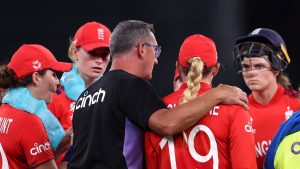Guess who’s back? The NBA – and its sending 22 teams to Orlando


Basketball fans rejoice – the NBA is making a comeback.
On Thursday, the NBA board of governors will hold an afternoon conference call to vote on a July 31 restart for the 2019-20 NBA season, which has been suspended since March 11 due to the COVID-19 pandemic.
So the NBA’s inviting 22 teams to Orlando: 13 Western Conference, 9 Eastern Conference. Eight-regular season games per team. Play-in for the 8th seeds. July 31-October 12. Vote tomorrow to ratify.
The NBA’s back.— Adrian Wojnarowski (@wojespn) June 3, 2020
Let’s get into the details of how the rest of the season would shape up:
Time and Location
The NBA “bubble” will include 22 teams that would converge on The Walt Disney World Resort in Orlando, Florida, where the season would resume on July 31. The NBA Finals would conclude on Oct. 12 at the latest.
Per Walt Disney World sources, Disney and the NBA have agreed that Disney’s Coronado Springs Resort is likely to be the primary host resort for the NBA when they resume the season. Sources say an agreement may be reached this week, which will allow preparations to move quickly.
— Keith Smith (@KeithSmithNBA) June 2, 2020
Players, coaches and team personnel will live at the Disney resort during the remainder of the season, based on how long their team continues to play into the postseason, and all those that live in the bubble will be required to practice social distancing, including resort staff.
The 22 Teams
There are currently 16 teams that qualify for the playoffs under the NBA’s traditional model of 8 teams from each conference.
In the Eastern Conference, those teams are Milwaukee, Toronto, Boston, Miami, Indiana, Philadelphia, Brooklyn and Orlando. In the Western Conference, those teams are the LA Lakers, LA Clippers, Denver, Utah, Oklahoma City, Houston, Dallas and Memphis.
Joining those 16 teams will be five more teams from the West – Portland, New Orleans, Sacramento, San Antonio and Phoenix – and one extra team from the East – Washington. Each of these teams are within 6 games of the 8-spot in their respective conferences and will have an opportunity to play their way into the postseason.
The Remaining Schedule
Here’s what we know so far:
Sources: Joining the 16 current playoff teams in Orlando: New Orleans, Portland, Phoenix, Sacramento and San Antonio in the West and Washington in the East. If the 9th seed is more than 4 games behind the 8th, No. 8 makes playoffs; Fewer than 4 games, a play-in tournament.
— Adrian Wojnarowski (@wojespn) June 3, 2020
Each of the 22 teams would play 8 regular season games in the bubble, and according to ESPN’s Adrian Wojnarowski, teams will have the opportunity to participate in a play-in tournament for the 8th seed in their respective conferences, based on how they finish the regular season.
The play-in tournament will include the No. 8 and No. 9 teams — if the ninth seed finishes the regular season within four games of the eighth, sources said. In that case, the No. 8 seed enters a double-elimination tournament, and the No. 9 seed a single-elimination tournament, sources said.
ESPN story on the NBA’s plan for a return: https://t.co/z90vvFqob6
— Adrian Wojnarowski (@wojespn) June 3, 2020
Wojnarowski expanded upon the format on Thursday morning, saying that the 22-team format made the most sense, financially and competitively.
“One owner told me, they really believe that the 22-team format was ultimately the most-compelling. Certainly it was more financially rewarding for teams and players than only bringing back 16 teams, and the ability for teams to play themselves into the postseason was a big part of it.”
Reporting on the NBA’s return with @elleduncanESPN on @SportsCenter. pic.twitter.com/eMOsycO70M
— Adrian Wojnarowski (@wojespn) June 3, 2020
One question that has been on the forefront of everyone’s mind has been the absence of homecourt advantage in the playoffs, considering the remainder of the season will be played at a single location.
With that, some teams are looking for advantages elsewhere, according to ESPN’s Dave McMenamin.
“Some of the scenarios discussed, sources told ESPN, include: The higher-seeded team being awarded the first possession of the second, third and fourth quarters … The higher-seeded team being allowed to designate one player to be able to be whistled for seven fouls instead of six before fouling out … The higher-seeded team receiving an extra coach’s challenge … The higher-seeded teams being able to transport their actual hardwood home court from their arenas to Orlando … An off-court feature in which playoff teams, in order of seeding 1-16, receive first choice on picking which hotel they will stay at in the ESPN Wide World of Sports Complex and Disney World Resort.”
With homecourt advantage out the window in an NBA bubble, some contenders are angling for an alternative leg-up, sources tell ESPN. Extra possessions, extra coaches challenges and even first dibs at picking a team hotel on site are being discussed https://t.co/26G5Iwo0rt
— Dave McMenamin (@mcten) June 3, 2020
This is a developing story. Stay tuned for more updates.








